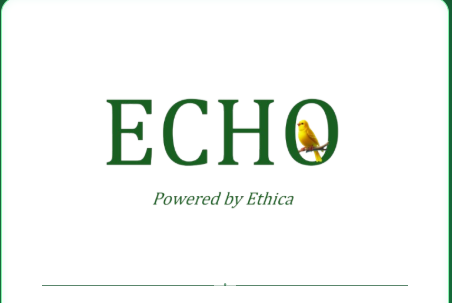Echo Whistleblowing Tool
Published
Apr 9, 2025
Author
Lewis
Reading Time
3 minute read
1. Identifying Security Requirements
When we set out to build Echo, our whistleblowing platform, the first step was understanding what “secure” truly means in a compliance context. My collaboration with Ethica’s legal experts clarified that confidentiality, tamper‑proof audit trails and fine‑grained access were non‑negotiable. We cataloged threat scenarios (from insider data leaks to external attacks) and defined core requirements: end‑to‑end encryption of reports, zero‑knowledge storage of submissions and multi‑factor authentication for all users.
2. Designing Role‑Based Workflows
Echo supports multiple distinct roles (Officers, Employees, Admins and Investigators) each with tailored dashboards and permissions. Leveraging Spatie’s Permission package, we mapped out every action: who can submit a report, who can view redacted details, who can escalate cases and who can export audit logs. This role‑based architecture not only streamlines the user experience but also ensures that sensitive reports are only visible to authorized personnel, reducing the attack surface for unauthorized data exposure.
3. Implementing Encryption and Immutable Logs
To guarantee confidentiality, we applied Laravel’s encryption services on all report content before writing to the database. Report metadata and attachments travel over HTTPS and rest encrypted at rest, accessible only via decryption keys stored outside the application environment. We also integrated Spatie’s Activitylog package to record every action (user logins, report views, status changes) in an immutable audit trail. These logs are write‑once and tamper‑evident, meeting stringent legal standards for evidence preservation.
4. Leading Penetration Testing and Hardening
Security validation doesn’t end at design; it requires real‑world testing. I personally led multiple penetration‑testing cycles, simulating attacks such as SQL injection, session hijacking and privilege escalation. We patched discovered vulnerabilities immediately, enforced strict Content Security Policies and implemented rate limiting to guard against brute‑force attempts. Regular code audits and dependency checks became part of our CI pipeline, ensuring that every deployment meets our zero‑tolerance security benchmark.
5. Deployment, Monitoring and Next Steps
With Echo’s core features hardened, we deployed the platform to ShujaaHost using Forge’s automated scripts. Continuous monitoring via Laravel Telescope and custom health‑check endpoints alerts us to anomalies in real time. Moving forward, we plan to integrate hardware security modules for key management, expand our audit‑trail storage into WORM‑compliant buckets and explore confidential computing for further data isolation. Through ongoing collaboration with Ethica’s legal team, Echo will continue evolving as the gold standard for secure, compliant whistleblowing.
Image Gallery

Enjoyed this article?
Share it or download for offline reading
Want to Learn More?
Explore more tech insights or discuss your project needs